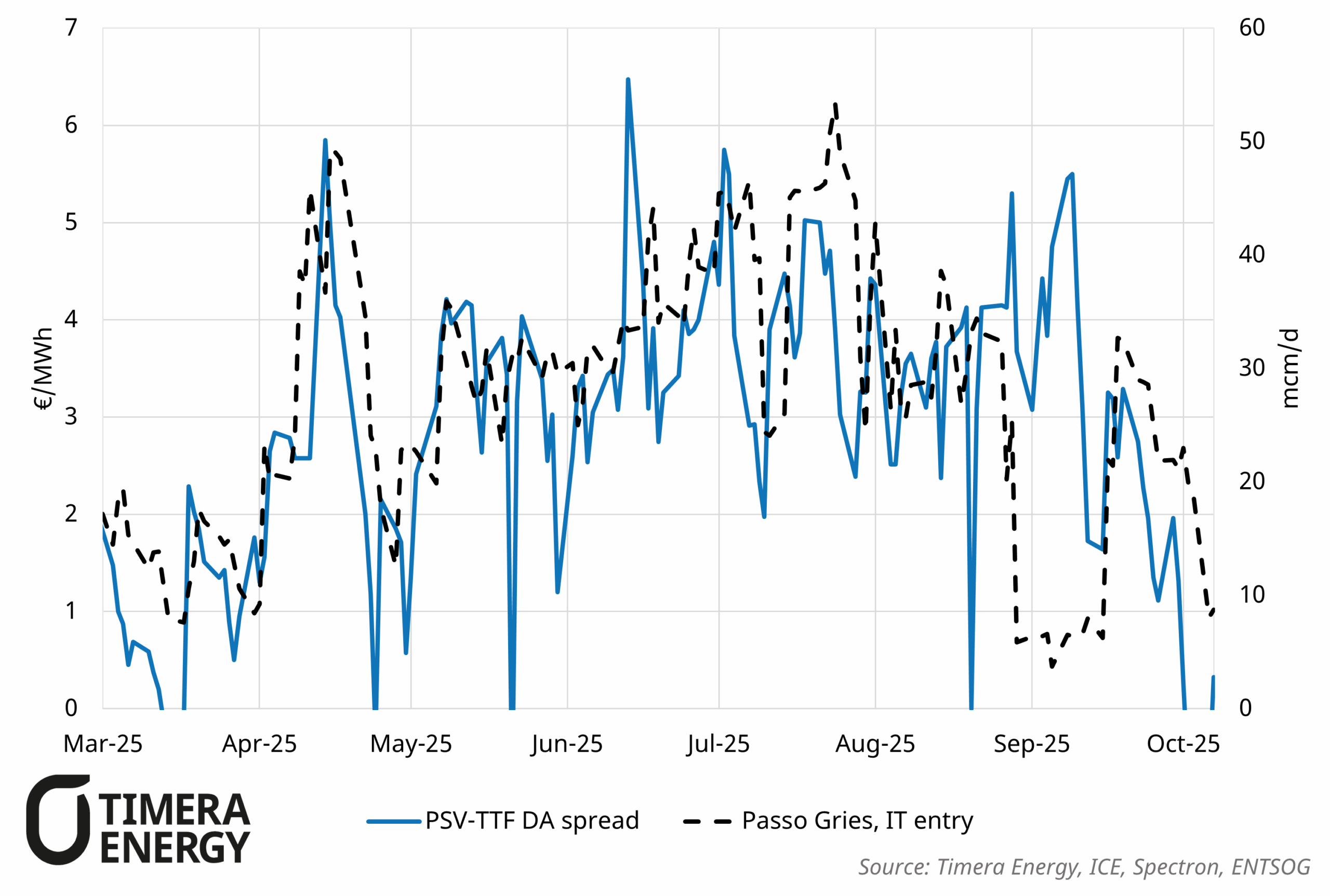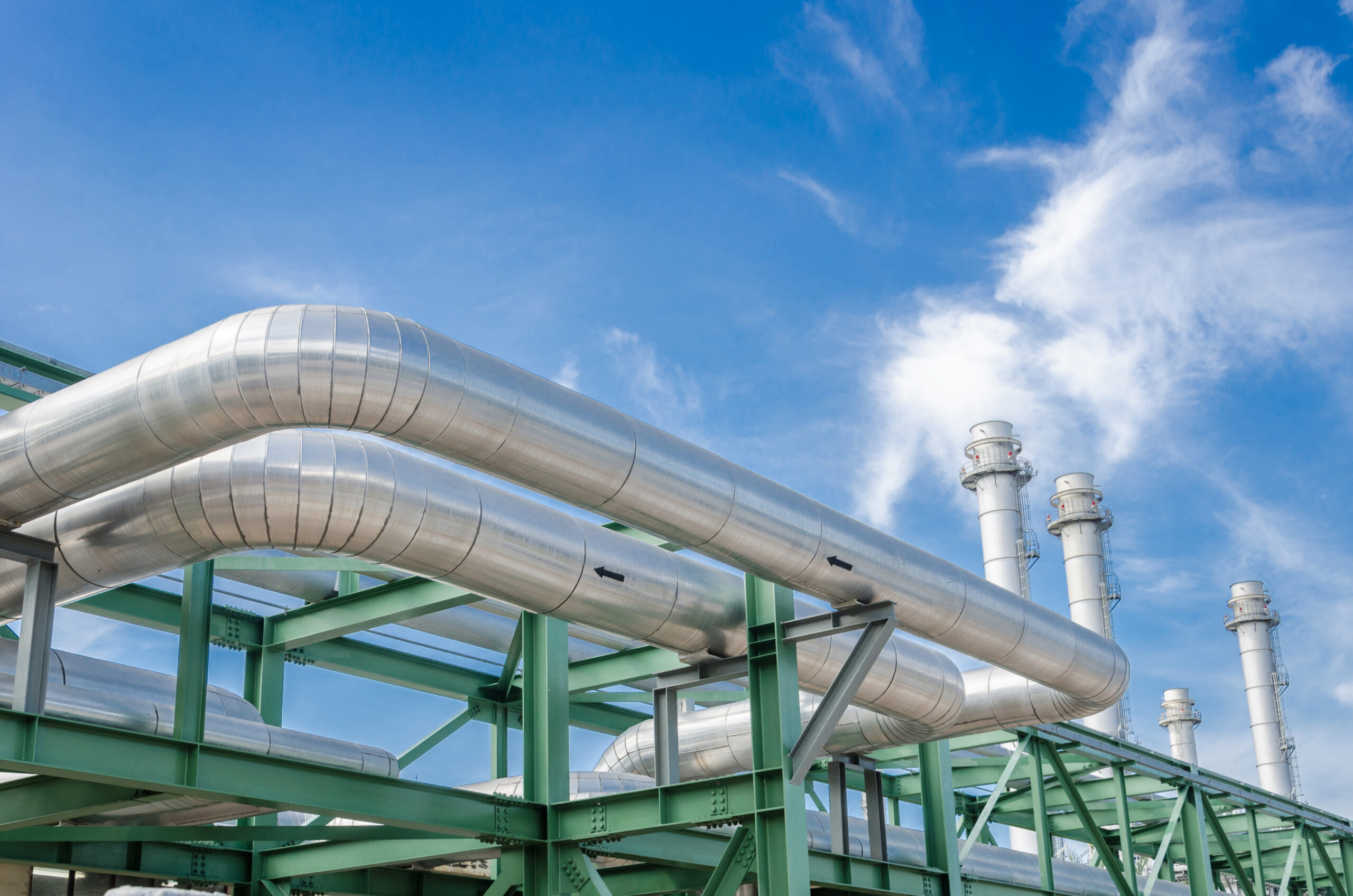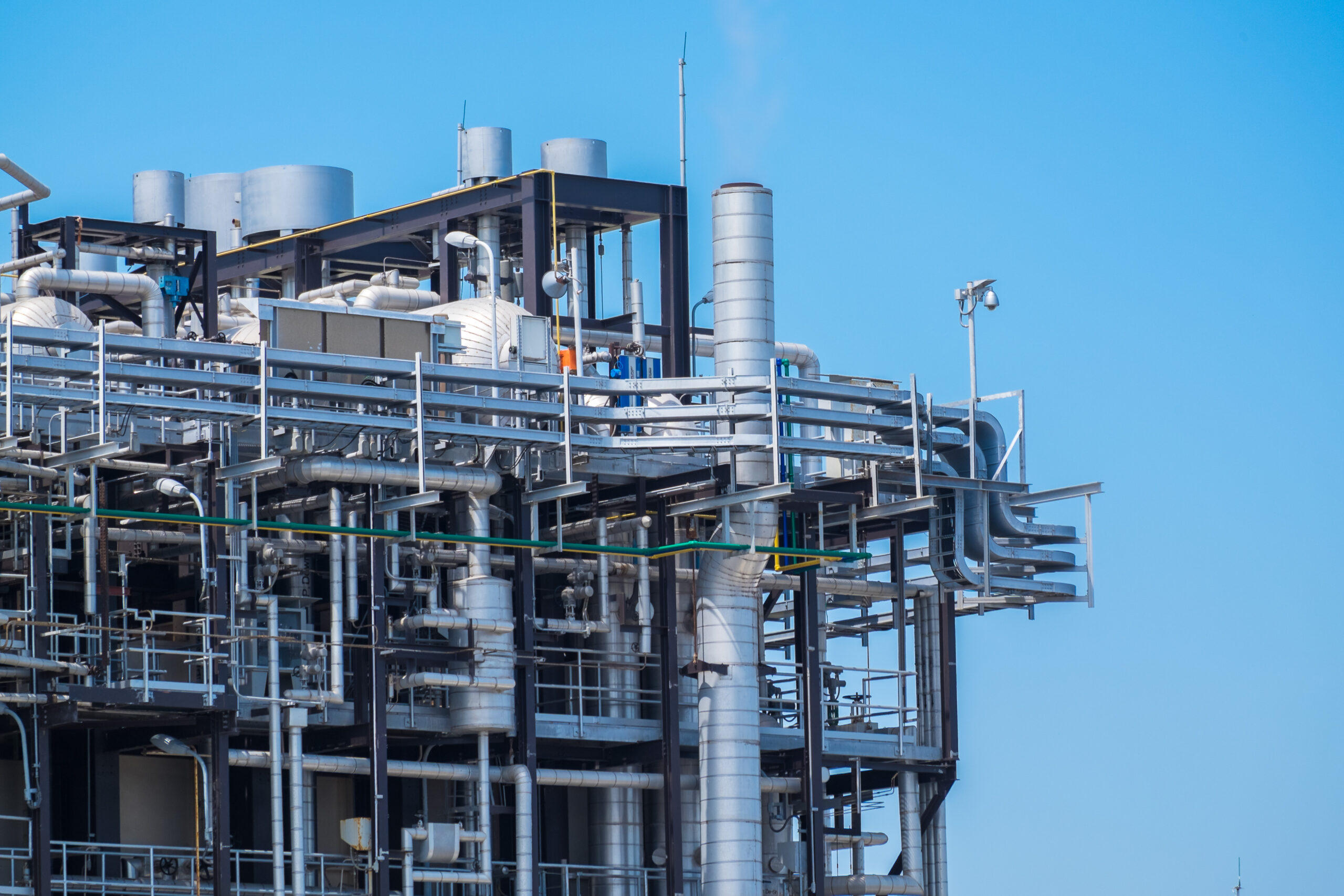The Italian government is progressing a draft proposal tasking energy regulator ARERA with measures to reduce the persistent premium of the Italian gas hub (PSV) to Northwest European hubs and thus provide relief for Italian consumers. Two potential mechanisms are being considered:
- Negative entry tariffs at Passo Gries (Switzerland – Italy), or
- A “liquidity service” that would offer capacity at a fixed PSV-TTF spread.
Historically, PSV has priced at a premium to Northwest European hubs as the marginal molecule balancing the Italian system has often been imports from FR and DE via the TransitGas pipeline. To attract such flows, PSV must trade high enough to cover the associated transport and exit / entry costs along the route.
Negative entry tariffs would effectively subsidize imports into Italy from Northwest Europe, narrowing the PSV-TTF spread in instances where imports via PassoGries sit on the margin. However, these risks distorting hub dynamics. By lowering the cost of piped imports, the measure could reduce the competitiveness of sending LNG into Italy as PassoGries flows move below ‘flexible’ LNG deliveries in the supply stack, weakening Italy’s LNG pull relative to other European terminals.
Further, any plans to recover costs through higher exit fees would prove difficult. Italy currently only exports limited volumes, mainly via Tarvisio to Central European markets. Moreover, the proposal could face scrutiny at the EU level given its similarity in principle to the now-defunct DE storage levy.
Since early July, calendar-2026 PSV-TTF spreads have narrowed by 0.61 €/MWh. This in part could reflect market anticipation that the proposed measures could directly cap PSV-TTF spreads, although other factors, included stronger than expected storage fill, could also be contributing.
Ultimately, there remains a risk that introducing structural distortions would artificially incentivise southward flows, tightening German and Northwest European gas balances. The likely outcome thus would be a redistribution of price pressure across regions.



